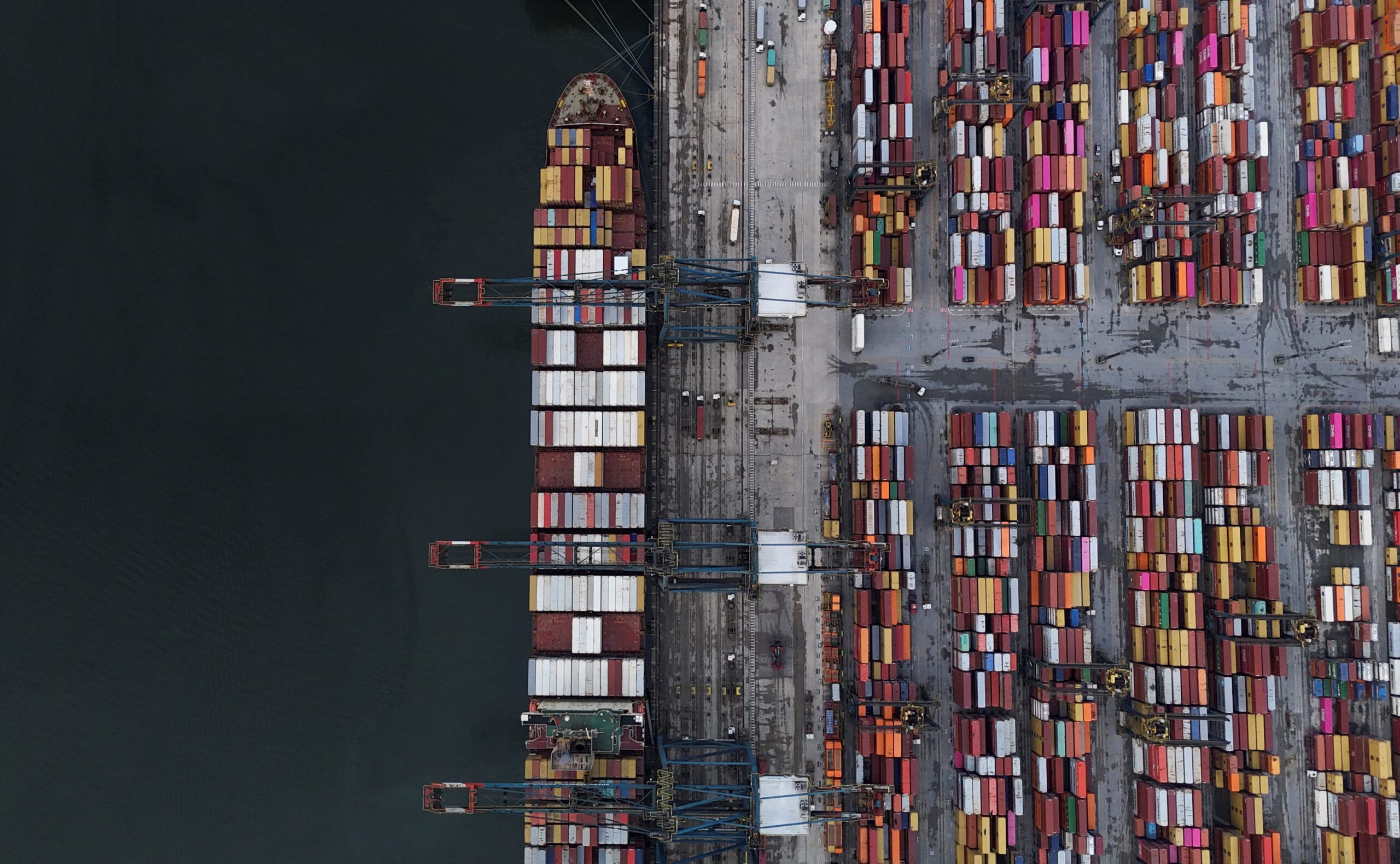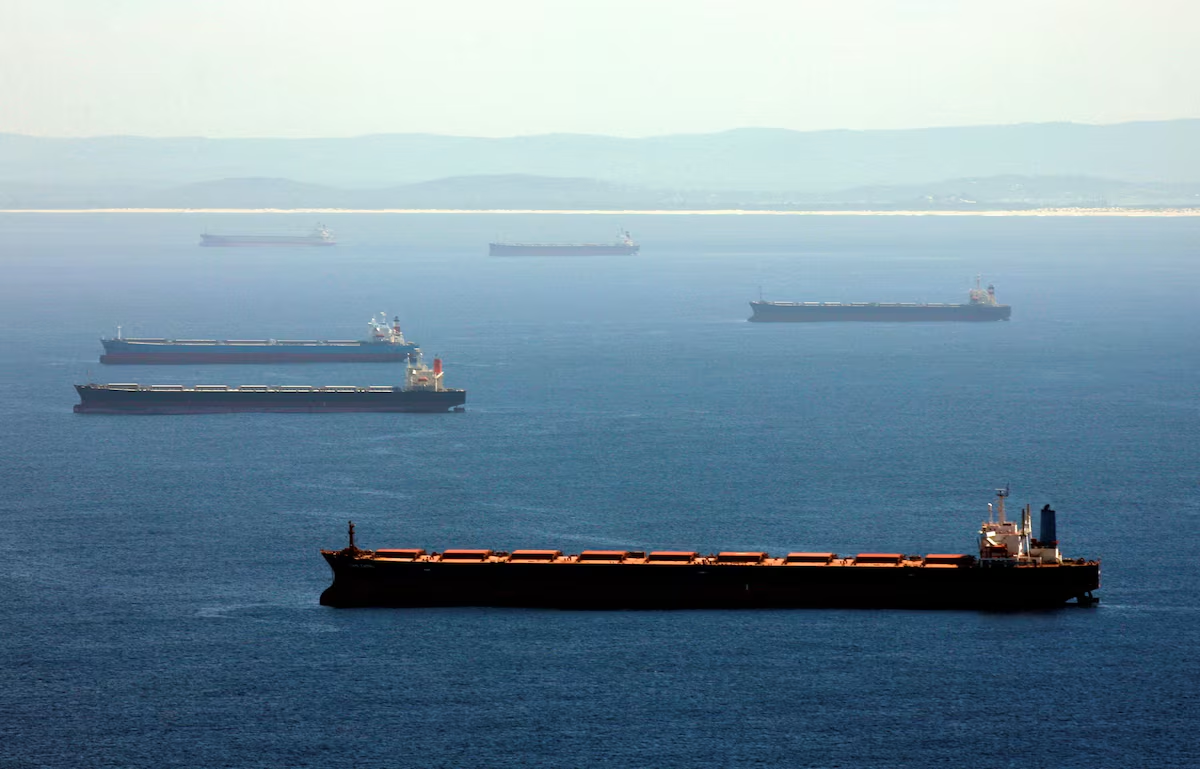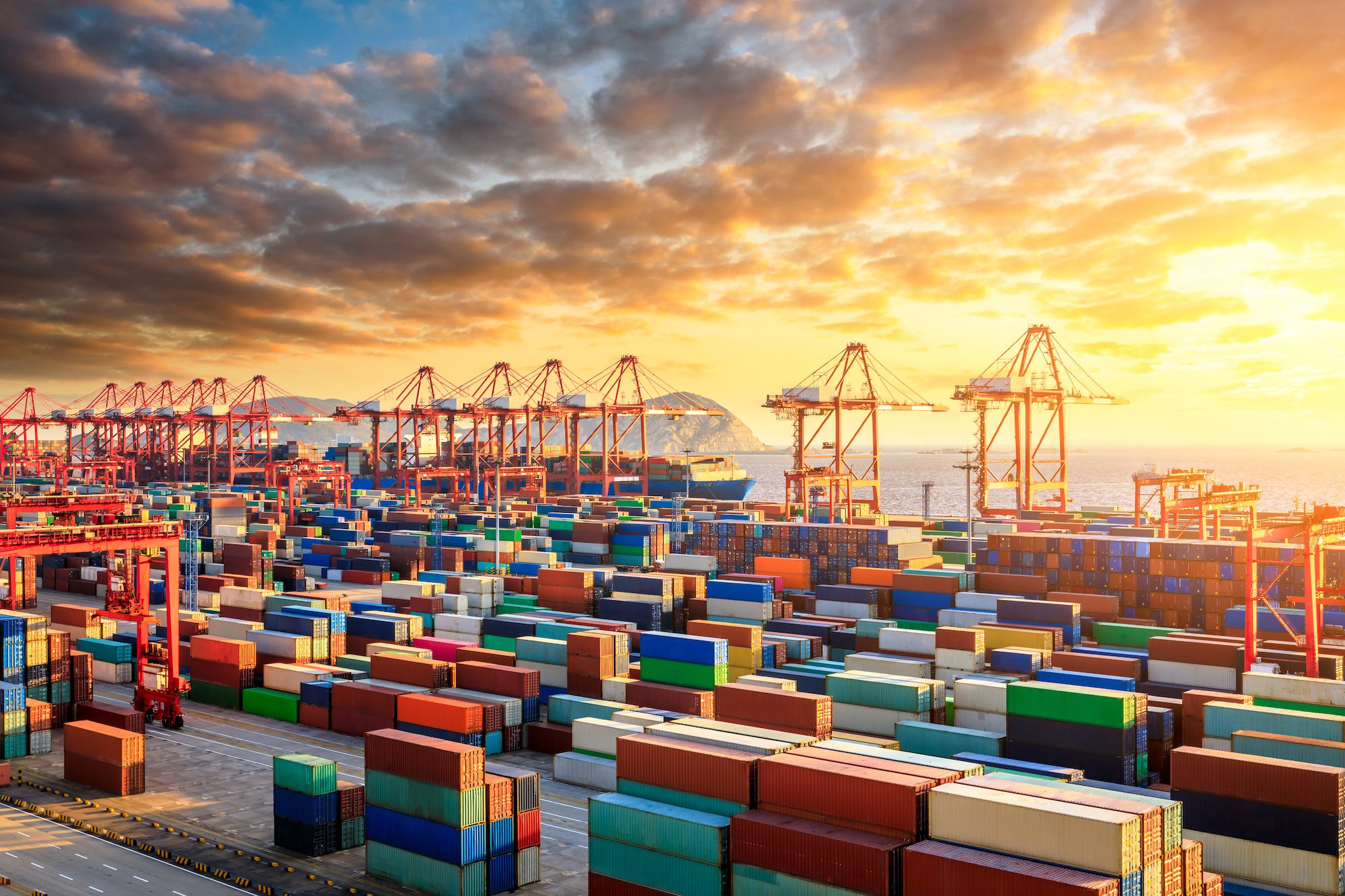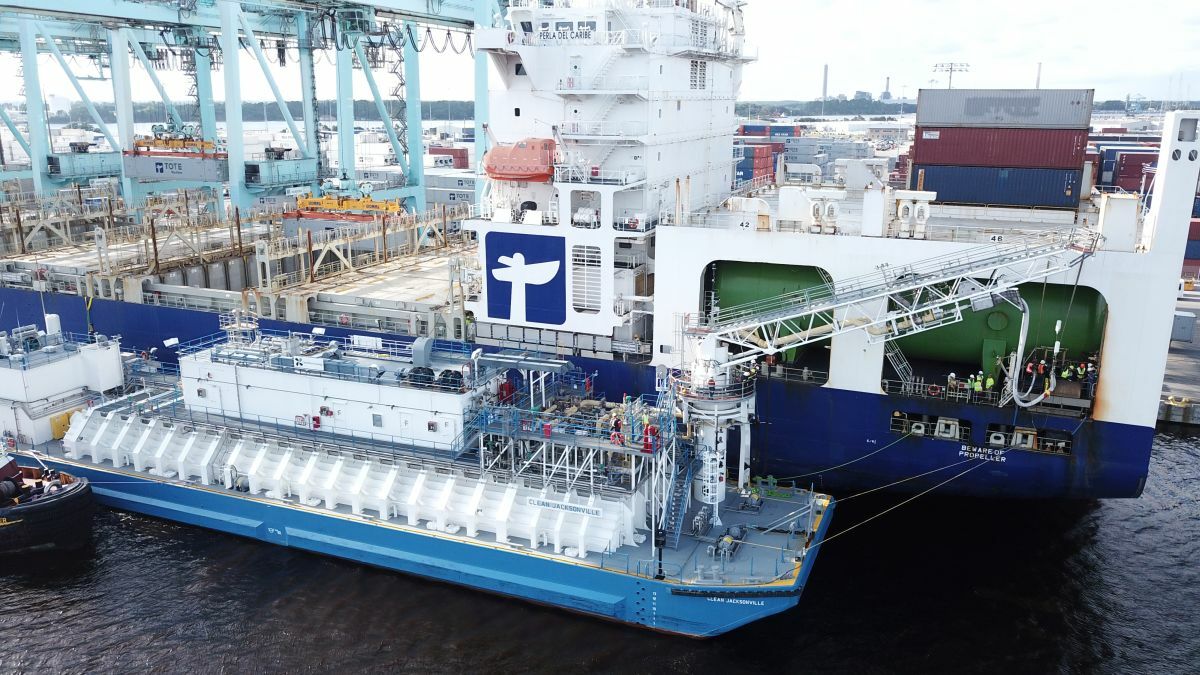By James Mayger and Weilun Soon
May 13, 2025 (Bloomberg) –A China-US deal to slash trade tariffs is set to push freight rates higher, as companies rush to use a 90-day grace period to ferry goods across the Pacific Ocean.
The rapid escalation of levies in recent weeks, as the trade war took hold, had prompted a steep slump in shipments, with Chinese exports to the US down 21% last month and imports falling almost 14%. Container giant A.P. Moller-Maersk A/S last week put the April drop in China-to-US volumes at 30 to 40%. That looks to have continued into May, with the number of air cargo flights sliding in the week through May 11 — before Monday’s deal was announced.
However, an unexpectedly emphatic ratcheting down of tension after weekend talks is now expected to trigger a rebound in demand and prices — a jump that shippers and analysts say will be exacerbated by the start of the busiest season for the sector, potentially before many vessels can be brought back from other trade lanes.
With Chinese suppliers already edging back in even before the deal was announced, freight rates on the trans-Pacific route jumped from $2,000 per forty-foot equivalent unit in mid-April to around $2,500 this week, according to a note from Jefferies on Tuesday.
An acceleration of that reversal will come as a relief. Container shipping companies have been grappling with a sharp decline in rates, nearing break-even point for some spot journeys. The global benchmark for container freight slid to just over $2,076 per forty-foot equivalent unit as of last week, according to the Drewry World Container Index. That’s the lowest since December 2023.
“The container sector is positioned for a meaningful improvement in spot rates on two fundamental fronts: a resumption of normal volumes and the beginnings of peak season, which typically commences by July,” Jefferies analysts wrote. “Given the tighter capacity on the transpacific, ocean carriers are in the driver’s seat to push freight rates meaningfully higher.”
Some freight forwarders — often the first to feel the impacts from such sharp movements in trade — say the trade truce is a move in the right direction.
“We hope it can lay the foundation for the parties to also reach a permanent deal that can create the long-term predictability our customers need,” said a Maersk spokesperson. “Right now, our customers have gotten 90 days of clarity with reduced tariffs, and we are working hard to help them make the best use of this window.”
Chinese exports to the US tend to start the year weak, before rising through the northern hemisphere summer toward a peak in September, ahead of the end-of-year holiday period. The slowdown in later months after that didn’t happen in 2024, probably because companies were front-loading purchases to get ahead of the tariffs President Donald Trump had threatened to impose once he took office in January.
Next steps for the sector would be a reduction of so-called blank sailings, a portion of a voyage that’s voided or skipped, to make better use of capacity that’s already deployed on the trans-Pacific route. Bringing ships back from other routes could take 40 days or more, Jefferies analysts estimated.
“As many exporters might have held up their shipments to the US in April, the substantial tariff rollback is likely to spur a wave of pent-up exports,” Lu Ting, Nomura Inc’s chief China economist, wrote shortly after the deal was announced on Monday.
Any lasting deal between China and the US will likely also cause changes in other nations’ trade flows.
Chinese exports to Vietnam and Thailand soared in March and April, and that was accompanied by a commensurate rise in their exports to the US, boosting demand for ships to carry goods from Southeast Asia to the US. That trade may now reverse as many Chinese companies can export products with only a 30% instead of the 145% impost that was being charged before Monday.
© 2025 Bloomberg L.P.

 Join The Club
Join The Club











